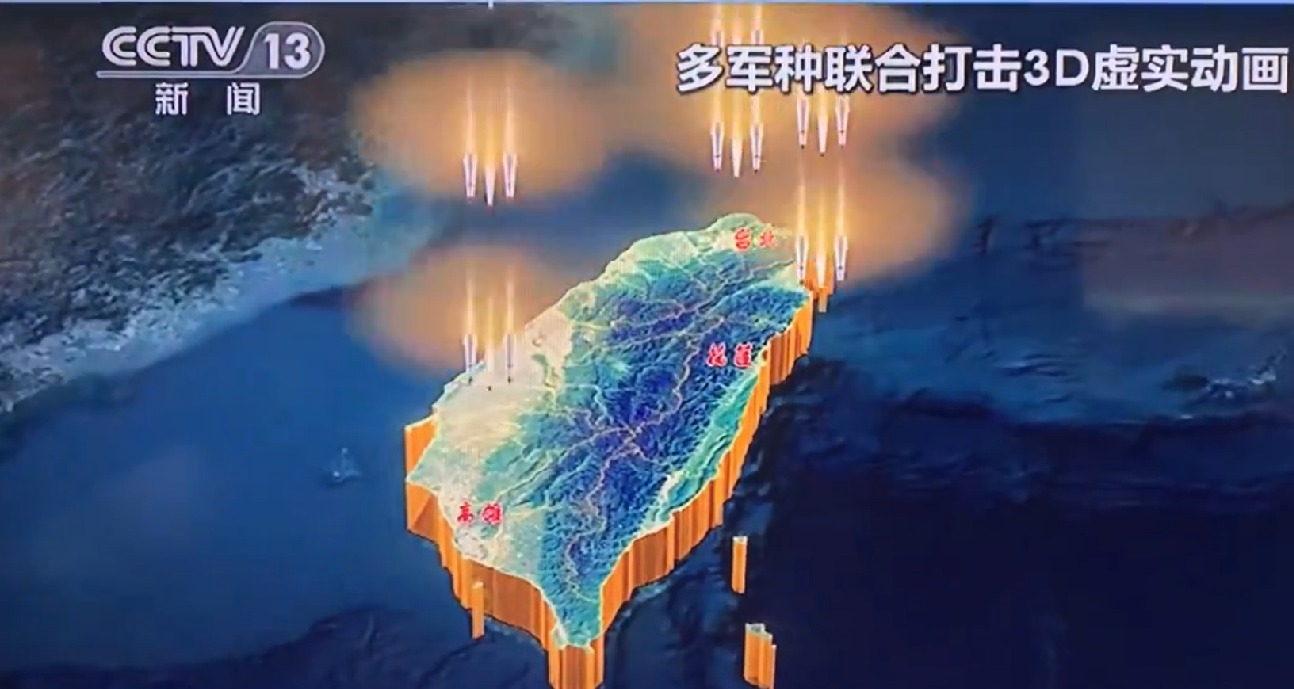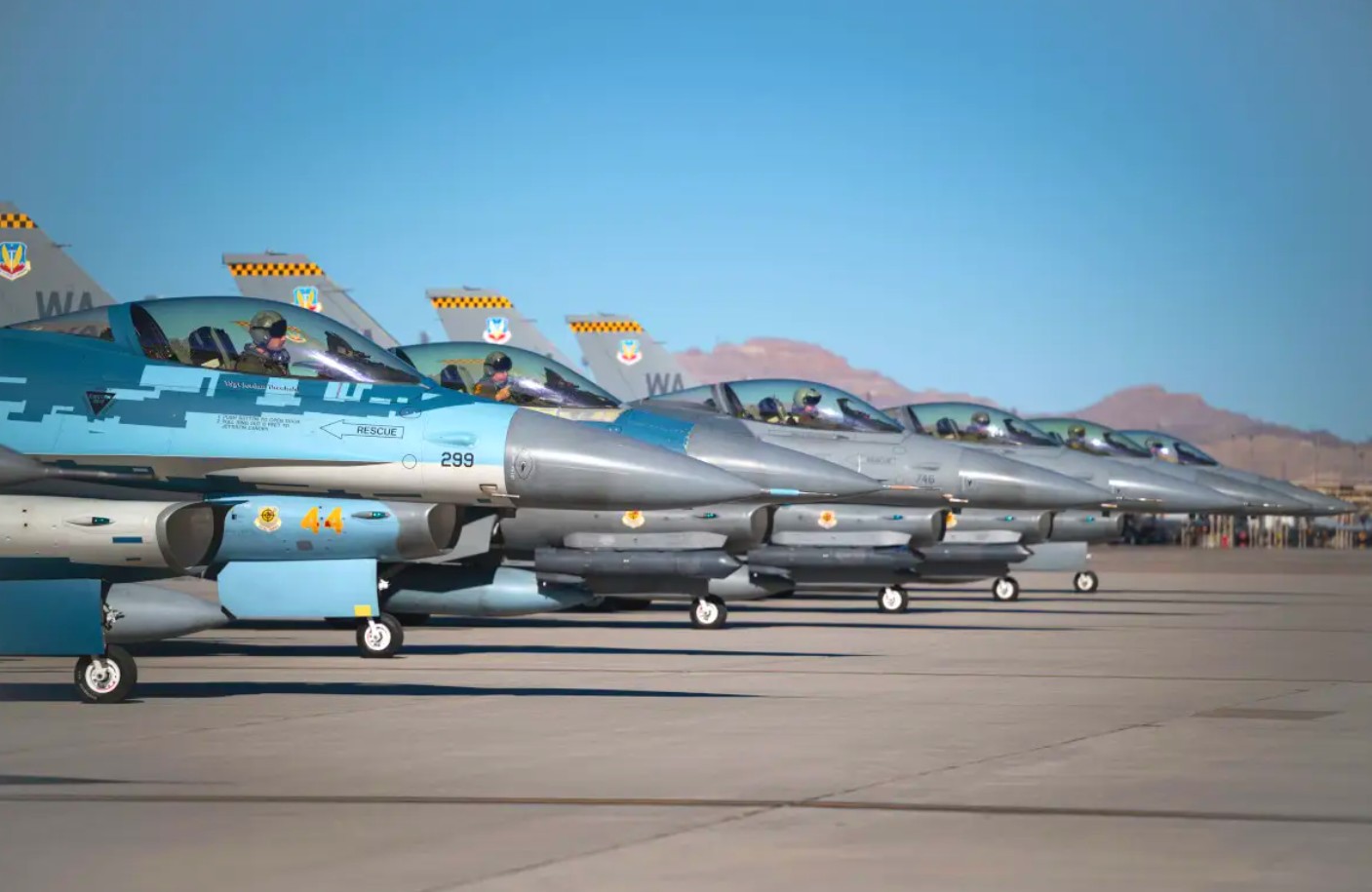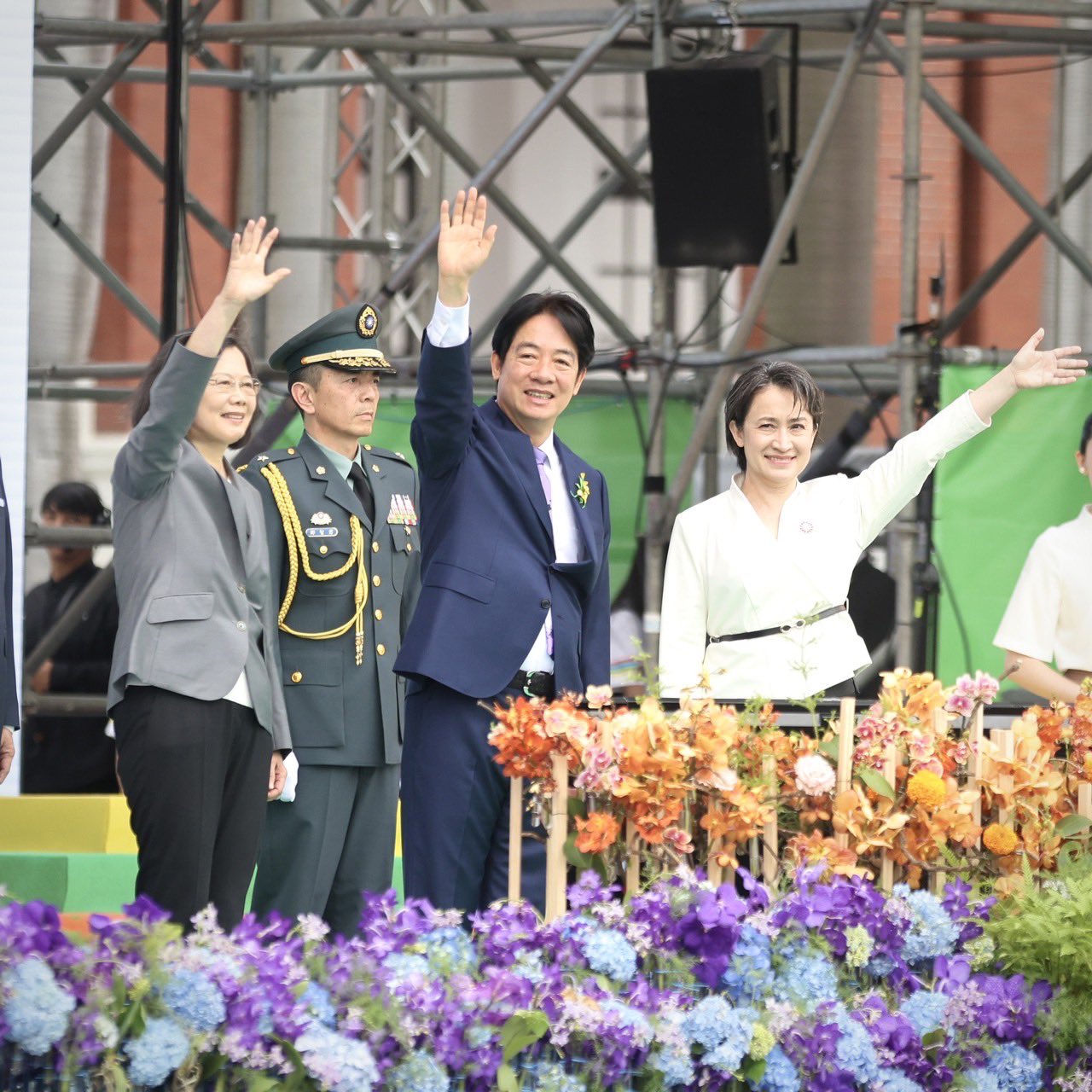As China encircled Taiwan, simulating an invasion of the self-ruled island state, it also released animated footage of how the all-out attack would take place, sending a clear message to the pro-democracy forces in Taipei that a raid was inevitable.
In his inaugural speech on May 20, President Lai Ching-te emphasized that his government would not compromise Taiwan’s democracy and liberty and called on China to “stop threatening Taiwan politically and militarily.”
China considers Taiwan an inalienable part of the Chinese mainland and views any acts of independence and upholding of sovereignty as provocative. So, it did what Taiwan had already expected: launched a military drill that saw joint operations between its sea, air, and rocket forces.
The People’s Liberation Army (PLA) simulated an invasion of Taiwan, with several Chinese propagandists warning that it could be a precursor to an actual attack. The main objectives of the exercises included integrated operations both inside and beyond the island chain, precision strikes on important targets, and joint sea-air combat readiness patrols.
In an intriguing development, though, the PLA also released animated footage of how the invasion would take place. The Eastern Theater Command released a multi-service joint strike 3D virtual and real animation on the second day of the ‘Joint Sword 24A’ military drills, providing a peek into an elaborate plan of attacking from multiple directions. The video, as per military watchers, was an attempt to intimidate Taiwan.
🇨🇳#CHINA PUTS OUT ANIMATION OF SIMULATED ATTACKS ON TAIWAN
China has made a 3D video showing how an invasion of Taiwan might look like. #Taiwan 🇹🇼
The PLA released a similar video a year ago!
This is a way for China to scare Taiwan into submission.
Unfortunately for China, it… pic.twitter.com/OcDbN0d0fc
— WORLD AT WAR (@World_At_War_6) May 24, 2024
Zhang Chi, a professor at the PLA National Defense University, told Global Times the goal of the exercise was to clearly warn President Lai and authorities that seeking “independence” was a dead end, Zhang said.
Despite the sustained fear-mongering by the Chinese, several military reports have suggested that China is far from prepared for an armed assault and is currently biding its time and preparing to launch an invasion, possibly by 2027.
While it does have the capability to invade Taiwan, experts reckon that it would prove to be outrageously costly for China, which has been through an economic slump recently. Additionally, it would likely be met with resistance by the United States and snowball into a wider and longer conflict.
An Invasion Is Unlikely Because It Will Be Costly
Some specialists believe that an invasion is a real possibility, but it is not imminent. Writing for Lowy Institute, Denny Roy, a Senior Fellow at the East-West Center in Honolulu specializing in Asia-Pacific strategic and security issues, said that based on observations, Chinese President Xi Jinping’s administration was not particularly keen on an elective conflict.
“Even with China’s massive arsenal of modern warships, combat aircraft, and missiles, Beijing is nowhere near the level of superiority that would guarantee a successful invasion given the probability of US and Japanese military resistance,” the analyst noted.
To invade Taiwan, the Chinese PLA forces would have to cross the Taiwan Strait, which is just 128 kilometers wide at its narrowest point. A sizable amphibious task force, the landing and movement of soldiers, armored vehicles, artillery, ammunition, fuel, food, and medical supplies would all be part of the invasion. However, a fleet of this scale would also be vulnerable to pre-emptive attacks by the Taiwanese forces that foresee the invasion.
In addition, the US and its regional allies like Japan are predicted to get embroiled in the conflict, owing to Japan’s geographical proximity to the Taiwanese island. Although the US adheres to the ‘One China’ policy in theory, Joe Biden has stated on multiple occasions that his military would come to Taipei’s aid in the event of an all-out attack.
In the aftermath of the latest Chinese drills, on May 27, a senior US lawmaker, Representative Michael McCaul, who heads the influential House Foreign Affairs Committee, reaffirmed the US support for Taiwan against Chinese “aggression” on his first congressional visit to Taiwan after the new President took over.
🇺🇸🇹🇼🇨🇳 The senior US lawmaker visiting Taipei said China's "intimidating" military exercises following the inauguration of Taiwan's President Lai Ching-te showed that China was not interested in conquering Taiwan by peaceful means.
The remarks by Michael McCaul, the Republican… pic.twitter.com/gI31zl13AE
— Barong (@Barong369) May 27, 2024
Moreover, a previous report published by a US-based think tank, the Council on Foreign Relations (CFR), predicted that the invasion would be treacherous because China would need to coordinate air, land, and sea forces with electronic and cyberwarfare in an incredibly sophisticated military operation to invade Taiwan.
CFR also noted that a seaborne invasion was only feasible for a few months of the year because of the two monsoon seasons and other harsh weather phenomena.
It further pointed out that it would take thousands of ships and several weeks to move hundreds of thousands of soldiers across the Taiwan Strait. Taiwan could then target the ships, concentrate soldiers on possible landing spots, and build barriers because each crossing would take hours.
“China would need to shift military assets to its eastern coast and undertake other visible preparations for an invasion, which Taiwan and the United States would likely be able to detect.”

While China has made it known that it would eliminate external interference when it launched an invasion, military analysts suggest that it would not be as easy as Beijing thinks it would. The rationale behind this argument is that the US has been gradually expanding its military presence in the region, especially with its increased access to the bases in the Philippines and troops and assets pouring into its existing facilities in Japan.
The US, for one, also provides air defense alerts to its allies in the region and is expected to aid Taiwan with intelligence. However, we do not have the evidence to prove that, yet.
The combined and expanding deterrence and defense capabilities of Taiwan, the United States, and like-minded nations like Japan will also determine how prepared China’s People’s Liberation Army will be in three years. These conditions could make it extremely difficult for the PLA to launch an invasion, let alone carry out a successful one.
The US has also been bolstering Taiwan’s military by providing it with sophisticated military equipment, which is requisite for Taiwanese forces to thwart a Chinese attack. It has equipped Taiwan with cutting-edge systems like the F-16 Vipers, which were pressed into duty during the recent drills, and the Patriot missile defense system, which has proved its combat efficacy in Ukraine. For a detailed report by the EurAsian Times on the arms sales, check here.

Also, beyond navigating Taiwanese, US, and Japanese vessels, missiles, submarines, mines, and drones across the Strait, China would face other concerns. A battle across the Taiwan Strait would imperil the livelihoods of millions of Chinese and disrupt regional economic activity. Xi’s reign could be in jeopardy because of the ensuing social instability.
In September last year, Taiwan released its “National Defense Report,” which said that the Taiwan military was upholding its long-held “resolute defense and multi-domain deterrence” strategic guidance and continuing to beef up its “asymmetrical warfare capabilities” in the face of a much stronger opponent.
A closer look at the report shows that the Taiwanese strategy would make the invasion as costly as possible for China by accruing asymmetric capabilities.
Even if China does not plan to invade Taiwan shortly, it is certainly aiming to wear out the Taiwanese forces with consistent aggression and intimidation.
Not Invasion, But A Treaty
American think tanks have cautioned that by 2028, China will attempt to force President Lai Ching-te to sign an annexation or peace agreement.
In a paper published on May 13, the Institute for the Study of War (ISW) and the American Enterprise Institute (AEI) expressed concern that China was planning to conquer Taiwan.
According to the report, China would carry out four “pulses” during Lai’s first term, which will involve “coordinated actions in the air, sea, information, cyber, economic, cognitive, and other domains.” According to the report, Beijing would be able to “obscure the larger unification campaign that each set of actions serves” during the four-year timeframe.
The research paper predicted that Beijing would exert more pressure on Taiwan’s administration and further isolate the nation with every year that Lai was in office. In 2028, China would then attempt to coerce Taiwan into signing a “peace agreement” or “unification framework.”
While it is not known if this is what the Chinese administration has in mind, we do know that targeted information warfare has been kicked off.

China has launched a coordinated information warfare campaign against Taiwan. This includes the recently published videos of the invasion and a ‘cross-strait lethality’ footage about the J-20’s combat efficacy in a potential conflict.
Additionally, Chinese drones have been dropping leaflets on the frontline Taiwanese islands. In what the military described as a “typical cognitive warfare trick,” a video emerged over the weekend showing a Chinese drone delivering a package including propaganda flyers on Kinmen Islands.
The Kinmen Defense Command said on May 26 that soldiers discovered a black cardboard box taped shut on a pier on Erdan Island in the Lieyu Township of Kinmen County. The box contained pamphlets with political slogans printed in simplified Chinese.
- Contact the author at sakshi.tiwari9555 (at) gmail.com
- Follow EurAsian Times on Google News




